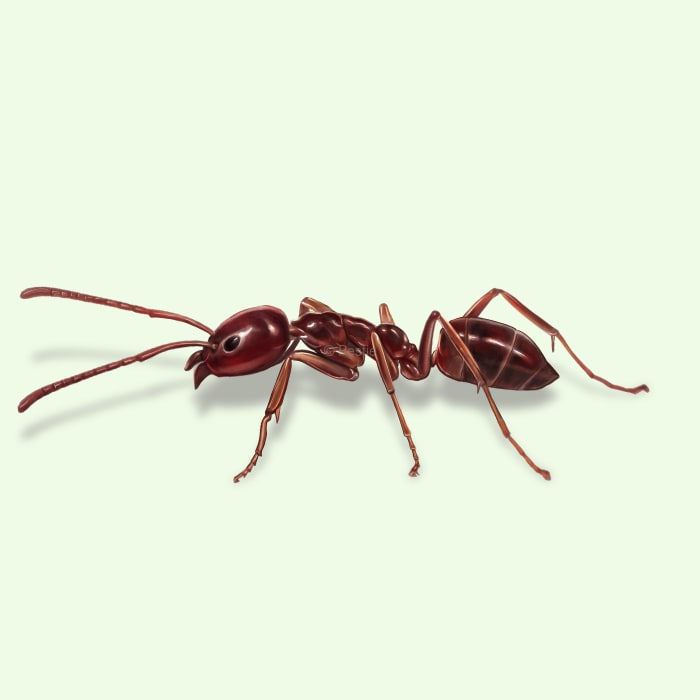How to identify and get rid of Argentine ants

The Argentine ants go marching… by the thousands
Characterized as the worst invasive ant species in the world, Argentine ants live up to their infamy. Originally from South America, these little hitchhikers have made the world their playground. And what makes these ants more successful than other species? It’s because they are nice to get along with! For other Argentine ants, that is.
You see, most ants fight with other species and other colonies of the same species. These intercolonial battles keep populations in check and limit ants to certain regions. However, Argentine ants get along so well with one another that ants from one colony don’t mind if their cousins from another colony stop on by.
This lack of aggression has led to the formation of supercolonies that can span hundreds of miles. The one in California is estimated to be 560 miles long! This long chain of related ant colonies with multiple queens can become a severe problem for other native ants, insects, and even small vertebrates that aren’t used to defending themselves against ants.
In the end, Argentine ants have made the list of the top 100 worst invasive species on the planet, and they can be a struggle for homeowners just like you.
How to identify Argentine ants
Argentine ants are tiny ants that vary in color from light to dark brown. On closer inspection, they come off as very shiny, and if you look at their antennae under a magnifying glass or microscope, you’ll see 12 sections on each antenna.
If you have an infestation of Argentine ants, it'll be quite obvious. They are notorious for going after sweets and making long trails of other workers looking for the sugary resource. While most ants will lay a pheromone trail from a food source back to the nest, Argentine ants double up by placing trail pheromones to and from the nest. That solidifies the food trail for other worker ants to follow.
How big are Argentine ants?
Argentine ants are quite small, typically about 1/16 to ¼ inch
What other ants look like Argentine ants?
They can be confused with odorous house ants or pavement ants, which are also small and tend to invade homes.
Where do Argentine ants live?
Argentine ants originated in northern Argentina and can be found in many South American countries. However, because of human introductions, Argentine ants can be found worldwide. They live on both coasts of the US and in Hawaii.
When they decide to venture inside, they are often found in kitchens and bathrooms seeking moisture and food. Outside, they live in wet environments like mulch, under rocks, or around sidewalks and foundations.
How to get rid of Argentine ants
Due to their tiny size, Argentine ants are very good at squeezing through even the smallest gaps to get inside your home. One of the best things to do to keep out Argentine ants is prevention.
Try these ant prevention tips below:
- Remove open food sources
- Store food in insect-proof containers
- Clean up juice, syrup, or sweet food spills entirely
- Eliminate any standing water, leaks, or moisture in the home
You can also put up a defense to keep them out, including:
- Seal up cracks and gaps around the home with caulk
- Spray an insect barrier in and around your home, like what Pestie offers
- Use ant baits to kill invading ants
Unfortunately, these tactics may not always be enough if the nest is nearby. If the ants keep returning, eliminating the nest may be the better solution.
Treat argentine ants with Pestie
If you're still having trouble keeping argentine ants away, the best option is to use a pro-grade, effective pest control solution like Pestie.
Pestie is a do-it-yourself pest control solution that's specially designed to keep argentine ants and other pests away from your home.
With Pestie, you can rest easy knowing that your living space is protected and free of creepy crawlies. And the best part? It's designed for people, pets, and the planet, so you can say goodbye to harsh chemicals and hello to peace of mind!
- Save hundreds compared to traditional annual pest plans
- People, pet, and planet-friendly
- Pro-grade customized formulas
Quick facts
- Scientific name
Linepithema Humile
- Colors
Light to dark brown, shiny
- Life span
Workers – 10-12 months, Queens – several years
- Diet
Sweets, pet food, meat, dead and living insects, food scraps, pretty much everything
How dangerous are Argentine Ants?
Low danger risk
Despite their nuisance and ability to completely take over an area, Argentine ants don’t sting and rarely bite. They don’t pose any threat to humans or pets or cause any structural damage.
If you thought the supercolony in California was long, then consider the supercolony in Europe. It runs from Italy to Spain and totals over 3700 miles!








